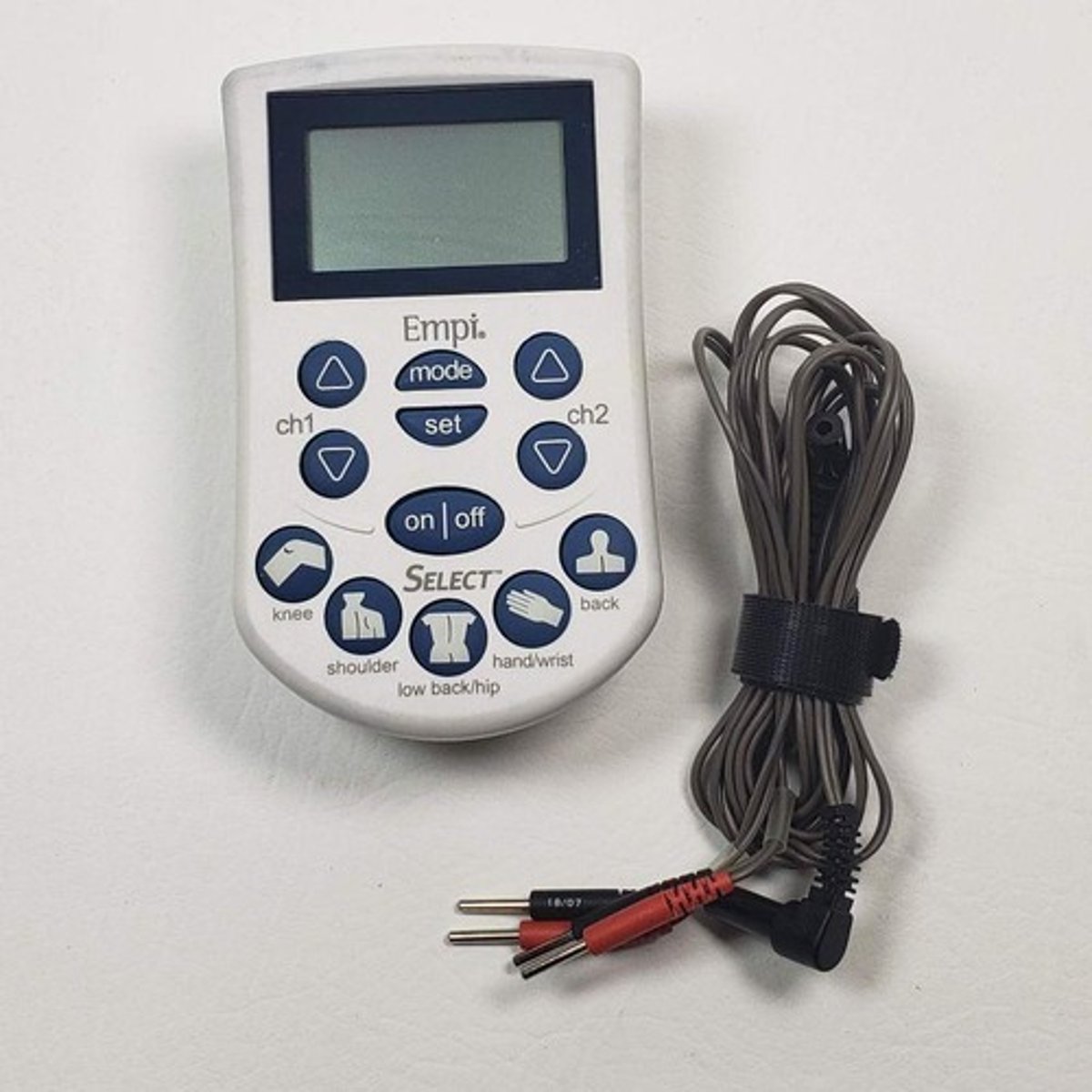Electrical Currents for Pain Control: TENS Overview
1/19
There's no tags or description
Looks like no tags are added yet.
Name | Mastery | Learn | Test | Matching | Spaced |
|---|
No study sessions yet.
20 Terms
TENS
Transcutaneous electrical nerve stimulation, a method used to control pain.

Sensory-Level, High-Rate TENS
Controls pain by activating non-nociceptive A-beta nerves, inhibiting transmission of nociceptive signals to the spinal cord level.
Motor-Level, Low-Rate TENS
Uses low frequency pulses (2 to 10 pps) at an intensity high enough to produce a motor contraction, stimulating endogenous opioid production.
Burst Mode TENS
Stimulation delivered in bursts, thought to work similarly to low-rate TENS.
Gate Theory
A theory that explains how non-nociceptive signals inhibit nociceptive signals transmission to the spinal cord.
Endogenous Opioids
Natural pain-relieving chemicals produced by the body, which are stimulated by Motor-Level, Low-Rate TENS.
DOMS
Delayed onset muscle soreness, which may occur from low-rate TENS due to muscle contractions.
Electrode Placement for TENS
For sensory level, electrodes are placed on or around the pain location; for motor level, on the target muscle.
IFC
Interferential Current, a type of electrical stimulation using two alternating currents to produce a therapeutic effect.
Pre-Modulated Current
A type of electrical stimulation that utilizes a modulated waveform for therapeutic effects.
Electrode Placement for IFC & Pre-Mod
Electrodes should be placed on or near the painful area or on trigger points or muscle spasms.
IFC & Pre-Mod Parameters
Both utilize waveforms with a frequency between 1,000 and 10,000 Hz, known as medium frequency AC.
Pain Control Duration for Motor-Level TENS
Pain will be controlled for 4-5 hours after a 20-30-minute treatment.
Maximum Duration for Motor-Level TENS
Should not be performed for longer than 45 minutes to prevent DOMS.
Tolerance Development
Patients may develop a tolerance to low-rate TENS, requiring higher dosages by the 4th-5th day of usage.
High-Rate TENS Recommendation
Recommended when sensation, but not muscle contraction, will be tolerated, such as after an acute injury.
Low-Rate TENS Recommendation
Recommended for longer duration of pain control without continuous modality use, and when muscle contraction is tolerated.
Contraindications for E-STIM
Do not use low-rate TENS when there is compromised tissue healing, such as muscle or tendon tears.
Precautions for E-STIM
Patients should avoid potentially symptom-aggravated activities because TENS decreases pain.
Clinical Applications of Electrical Currents
Used for acute pain after surgery and chronic pain conditions like knee OA, diabetic neuropathy, and LBP.